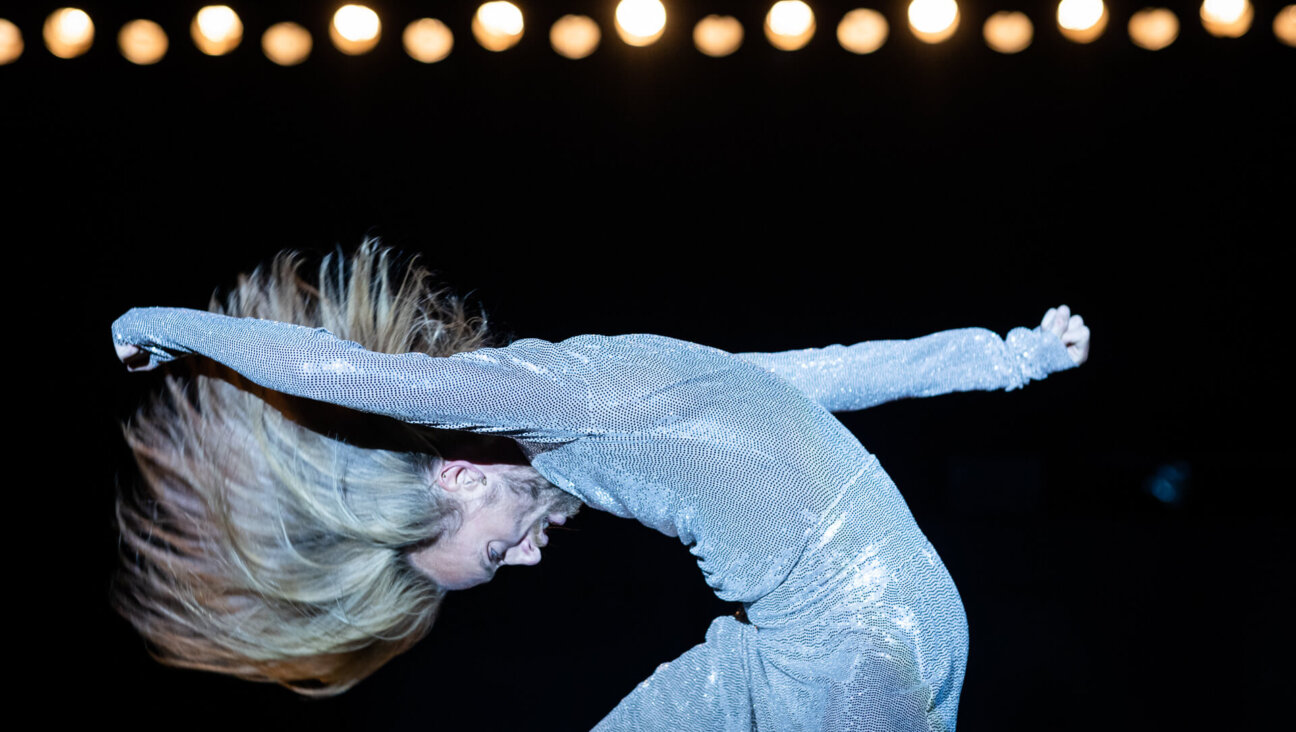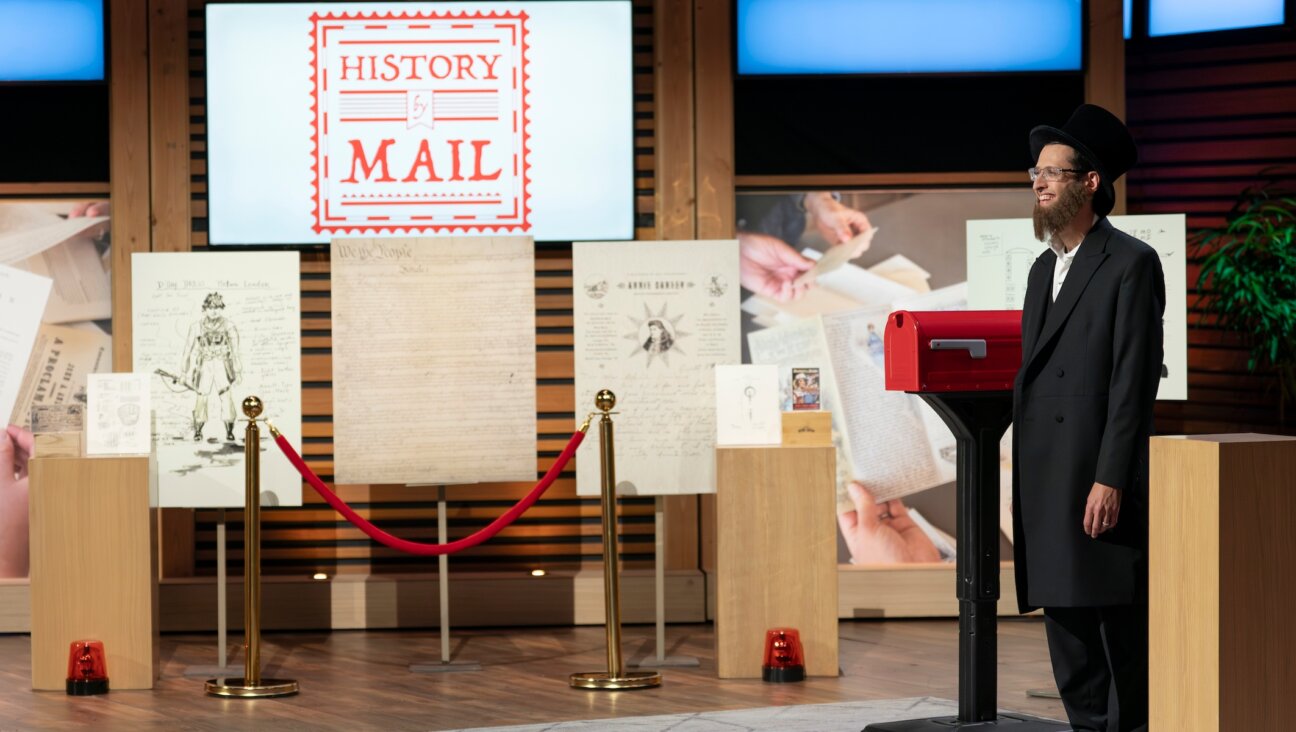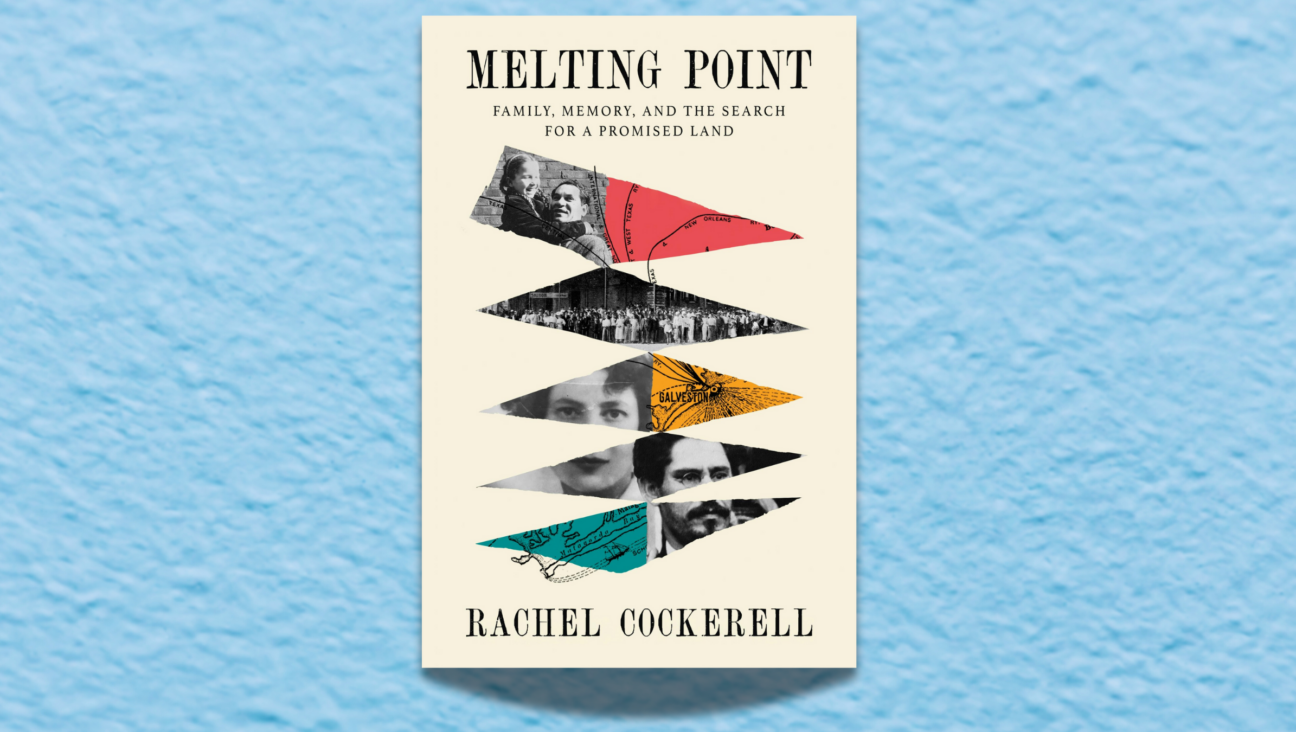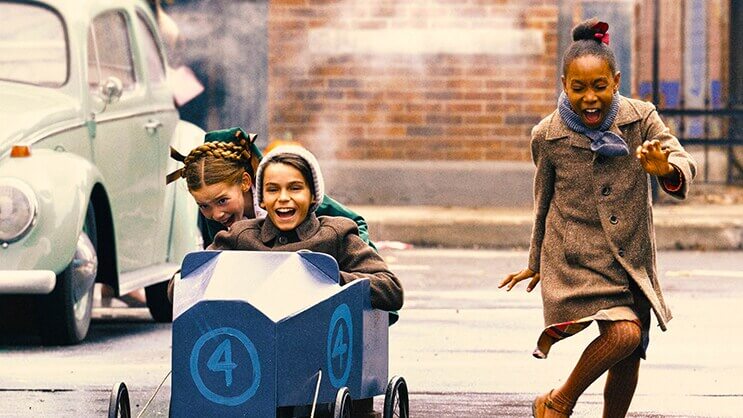Lost and Found

PAPER TRAIL: When Koppel opened the diary, a piece of evidence about its author fell out: A newspaper clipping from the Forverts.
When I first opened the red leather diary, I had no idea of the world that was about to unfold before me and change the course of my life and that of 90-year-old Florence Wolfson Howitt. When I left my apartment one morning in 2003 and encountered a Dumpster full of old steamer trunks, among other artifacts, I recovered the diary, discarded after years of languishing in my building’s storage unit. Its pages revealed the adventures of a young woman growing up in Manhattan in the 1930s.

PAPER TRAIL: When Koppel opened the diary, a piece of evidence about its author fell out: A newspaper clipping from the Forverts.

UPPER WEST SIDE STORY: Three years after Koppel first stumbled upon the 1920s diary in her Riverside Drive building?s storage room, she found its author, Florence Wolfson Howitt (above).
Back in my room, holding my breath, I released the brass latch. Despite the rusted keyhole, the diary was unlocked. Little pieces of red leather sprinkled onto my white comforter. From 1929 to 1934, not a single day’s entry had been skipped. The journal painted a vivid picture of 1930s New York — horseback riding in Central Park, summer excursions to the Catskills and an obsession with a famous avant-garde actress, Eva Le Gallienne. Its nearly 2,000 entries, written in faded black ink, captured the passions and ambitious of an intensely creative young Jewish woman. Brief, breathless dispatches filled every page of the five-year chronicle, unfurling into a Manhattan fairy tale.
“Mile Stones Five Year Diary” was written in gold letters across the book’s worn cover. Inside, a blue vine grew around the frontispiece, stamped with a zodiac wheel: “This book belongs to… Florence Wolfson.” The diary seemed to respond to being back in warm hands, its pages becoming unstuck and fanning out. I flipped through the entries, dense with girlish cursive. I could tell it the journal had been cherished. I located the date that Florence began writing: August 11, 1929, the day she received the diary as a gift for her 14th birthday.
As I slipped under the covers, trying to image what Florence might have looked like, a brittle newspaper clipping fell out from between two stuck pages. It was from the Forward, written in Yiddish and English: “Florence Wolfson, of 1391 Madison Ave., who was graduated from Wadleigh H.S. at 15, is the recipient of a State Scholarship.”
Florence’s picture was printed on the clipping. Except for her marcelled blond hair, she appeared completely contemporary, as if she were a young woman of today. Her eyes were sensual and intelligent. I could see myself in her face; we were both writers and painters. Florence seemed so alive, intensely internal and fully engaged with the world around her.
I couldn’t help but read her entries as if they were personal letters to me. Florence and I shared so many of the same longings for love, and the desire to make our own way. As I read her diary, I was drawn into Florence’s day-to-day existence, trips to the theater and escapes to the Museum of Modern Art, which opened in 1929. The Metropolitan Museum of Art, free and almost deserted during the week, was a temple that she wandered in, solitary and content, for hours without seeing a soul.
The diary was a portal into this lost world. I felt as if we were one, this young woman from the ’30s and I. My lavender bedroom filled with an orange glow from the streetlamp outside my second-story windows.
Compelled by the hopes and heartaches and uncanny similarities I shared with her, I set out to find Florence, my only clue her name and address on the Forward clipping. Staring out of the sepia newsprint, her luminous eyes would not let me go. Florence seemed to be saying, “Find me, find me.”
Three years later, I received a chance phone call from a private investigator I’d hired. Searching the city’s birth records, he discovered one Florence Wolfson, born in New York City on August 11, 1915, to a pair of Jewish immigrants from Russia, a doctor and his wife. He led me to Florence Howitt, a 90-year-old woman living with her husband of 67 years, with homes in Westport, Conn., and Pompano Beach, Fla.
One Sunday afternoon in April 2006, eagerly and a bit nervously, I dialed Florence’s Florida number on my cell. After two rings, a refined voice with the command of a stage actress answered. “Hello?” “Florence?”
I met Florence for the first time in May 2006 in Westport, where she lived with her 95-year-old husband, Nathan Howitt, a retired oral surgeon who was one of many admirers from her youth.
Florence hugged me. She was an ageless phenom, full of spunk. During weekly Sunday visits over bagels and lox, we got to know each other. Reunited with her diary, Florence journeyed back to the girl she had been, rediscovering a lost self that had burned with creative fervor.
Florence was one of a generation of Depression-stamped young men and women who longed to cultivate a creative life. As a 19-year-old Columbia graduate student, she hosted a literary salon in her parents’ apartment. Her friends, the young poets Delmore Schwartz and John Berryman, were members.
During our talks, Florence showed me old photographs. Scalloped-edged black-and-white images re-created the half-forgotten world of the sophisticated young Manhattanite who grew up on the Upper East Side. In the snapshots, Florence is outfitted in clothes designed by her mother, a couture dressmaker with a shop on Madison Avenue. Her mother had come to America alone as a teenager and worked her way up to being a respected business owner, a rare accomplishment in those days.
Stern family portraits projected the intellectual strength and fearlessness of the Wolfsons. Both of Florence’s parents came from families of prominent rabbis and went to work the day they arrived in this country.
After Florence married, she drifted from her art and admitted that later in life she took on “a country club mentality.” As she fingered the pages of the leather-bound book crumbling in her hands, she reflected on the young woman brought to life so vividly in its pages.
Last April, Florence’s husband died. I learned from her diary that they had met when she was 13 at Spring Lake, his parents’ Catskills hotel. I flew down to Florida to be with her. “Lily and her new grandmother,” Florence said, as we took a photo. “You’ve brought back my life.”
Lily Koppel writes for The New York Times and other publications. She is the author of the recently published “The Red Leather Diary: Reclaiming a Life Through the Pages of a Lost Journal” (HarperCollins).
The Forward is free to read, but it isn’t free to produce

I hope you appreciated this article. Before you go, I’d like to ask you to please support the Forward.
Now more than ever, American Jews need independent news they can trust, with reporting driven by truth, not ideology. We serve you, not any ideological agenda.
At a time when other newsrooms are closing or cutting back, the Forward has removed its paywall and invested additional resources to report on the ground from Israel and around the U.S. on the impact of the war, rising antisemitism and polarized discourse.
This is a great time to support independent Jewish journalism you rely on. Make a Passover gift today!
— Rachel Fishman Feddersen, Publisher and CEO
Most Popular
- 1

News Student protesters being deported are not ‘martyrs and heroes,’ says former antisemitism envoy
- 2

News Who is Alan Garber, the Jewish Harvard president who stood up to Trump over antisemitism?
- 3

Fast Forward Suspected arsonist intended to beat Gov. Josh Shapiro with a sledgehammer, investigators say
- 4
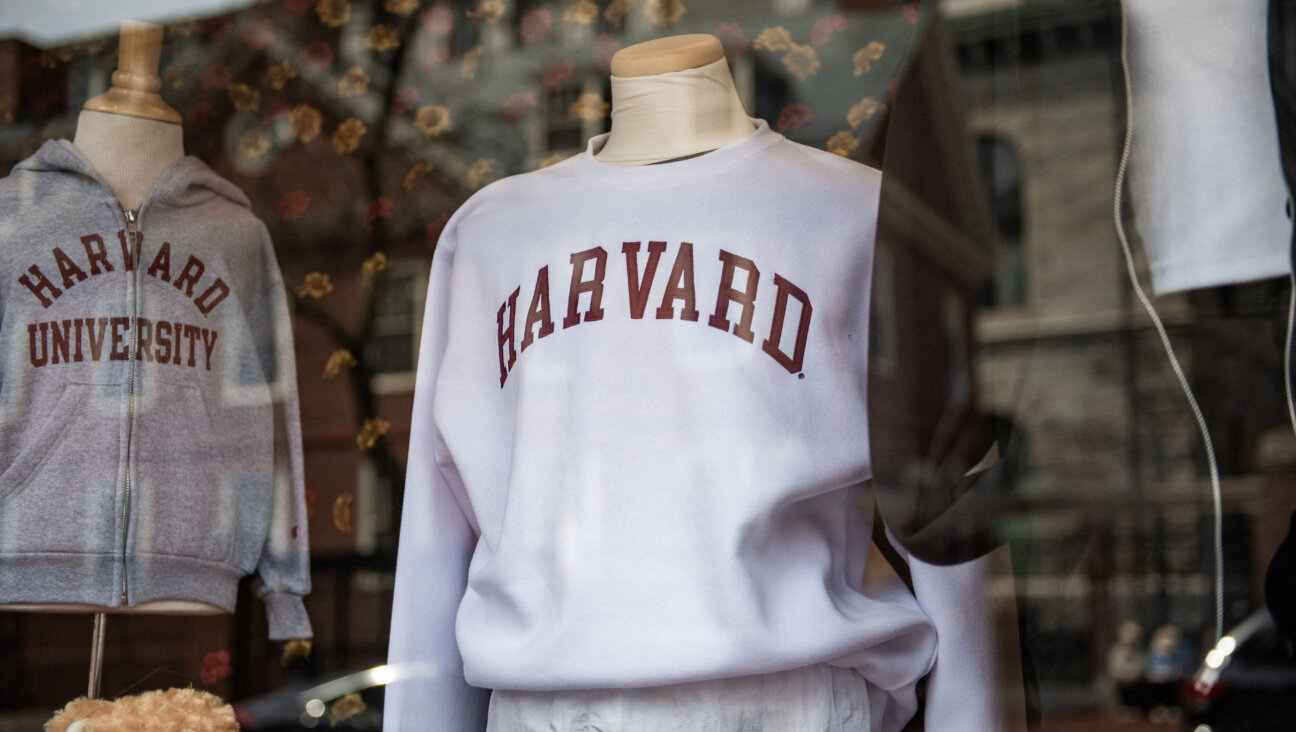
Opinion What Jewish university presidents say: Trump is exploiting campus antisemitism, not fighting it
In Case You Missed It
-

Fast Forward Israeli army fires deputy commander after finding ‘operational errors’ in killing of 15 Gazans
-

News Pope Francis, who advanced church’s relationships with Jews, dies at 88
-

Fast Forward ‘F–k Israel’ message displayed at Coachella music festival and streamed to millions
-
Fast Forward Jewish students, alumni decry ‘weaponization of antisemitism’ across country
-
Shop the Forward Store
100% of profits support our journalism
Republish This Story
Please read before republishing
We’re happy to make this story available to republish for free, unless it originated with JTA, Haaretz or another publication (as indicated on the article) and as long as you follow our guidelines.
You must comply with the following:
- Credit the Forward
- Retain our pixel
- Preserve our canonical link in Google search
- Add a noindex tag in Google search
See our full guidelines for more information, and this guide for detail about canonical URLs.
To republish, copy the HTML by clicking on the yellow button to the right; it includes our tracking pixel, all paragraph styles and hyperlinks, the author byline and credit to the Forward. It does not include images; to avoid copyright violations, you must add them manually, following our guidelines. Please email us at [email protected], subject line “republish,” with any questions or to let us know what stories you’re picking up.








